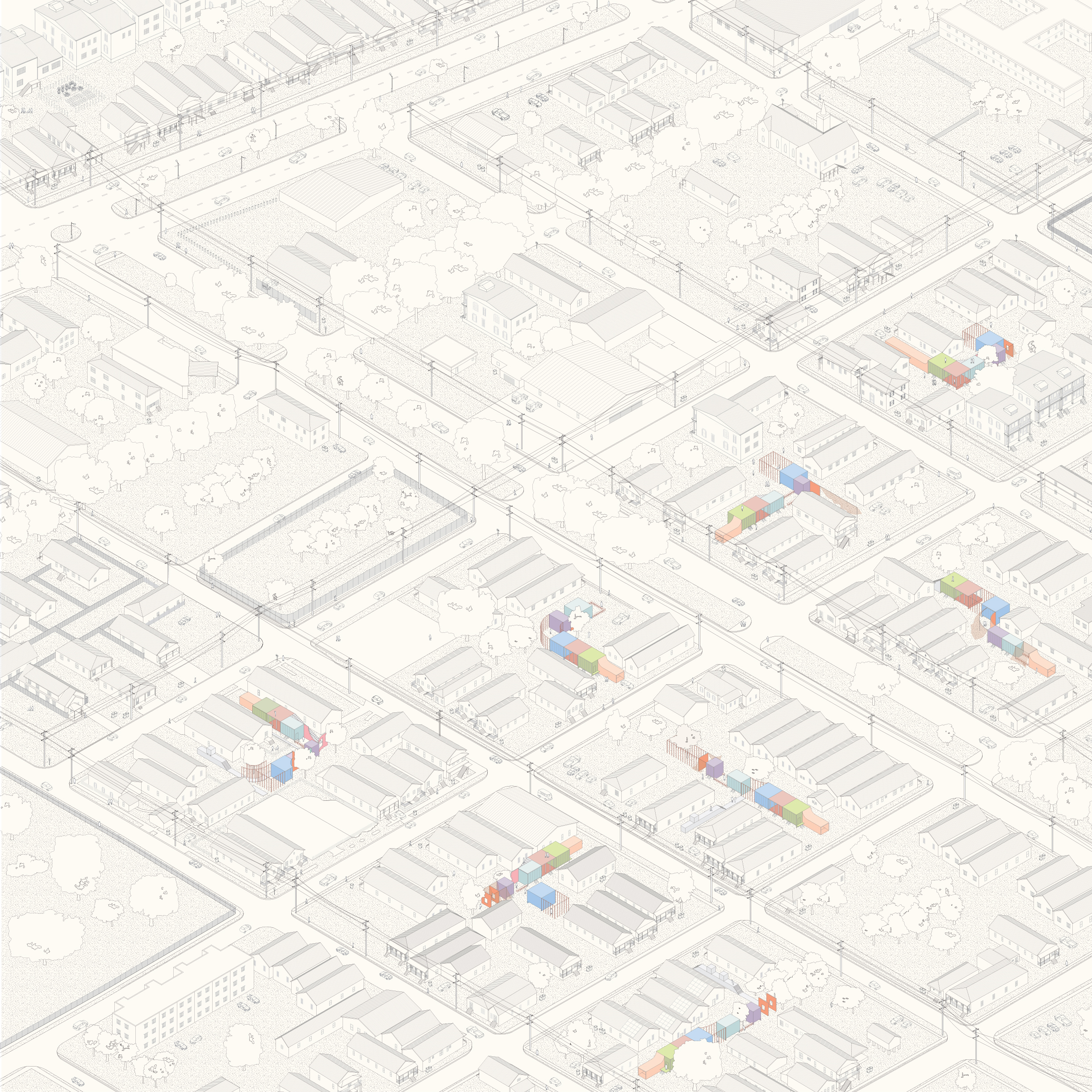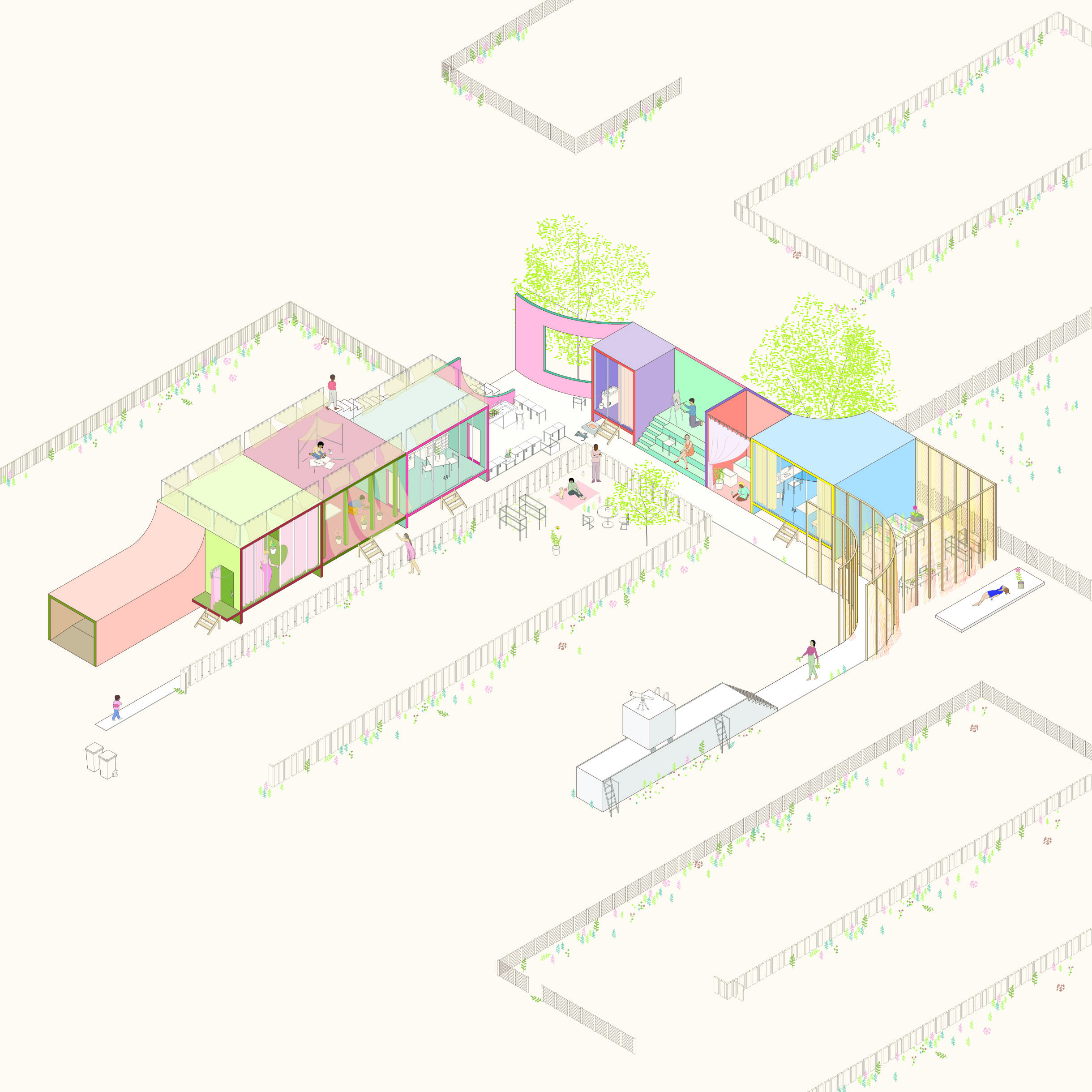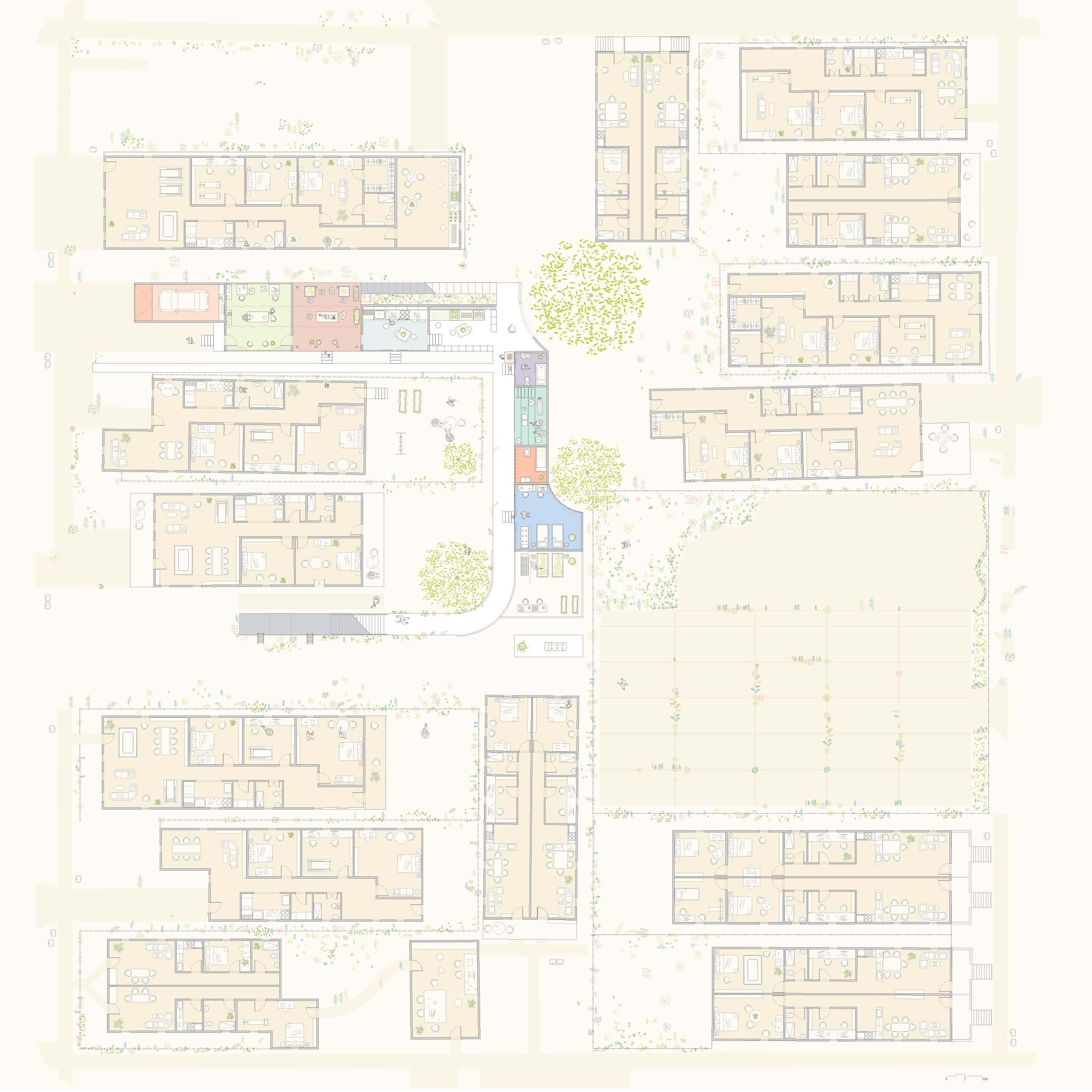the fence has just broken the water pitcher
Rice School of Architecture spring 2018 studio project | instructor: Piergianna Mazzocca
-foreword-
Michel Foucault in his preface to The Order of Things (1966) writes:
This book first arose out of a passage in Borges, out of the laughter that shattered, as I read the passage, all the familiar landmarks of my thought — our thought, the thought that bears the stamp of our age and our geography — breaking up all the ordered surfaces and all the planes with which we are accustomed to tame the wild profusion of existing things, and continuing long afterwards to disturb and threaten with collapse our age-old distinction between the Same and the Other. This passage quotes a “certain Chinese encyclopedia” in which it is written that “animals are divided into: (a) belonging to the Emperor, (b) embalmed, (c) tame, (d) sucking pigs, (e) sirens, (f) fabulous, (g) stray dogs, (h) included in the present classification, (i) frenzied, (j) innumerable, (k) drawn with a very fine camelhair brush, (1) et cetera, (m) having just broken the water pitcher, (n) that from a long way off” look like flies”. In the wonderment of this taxonomy, the thing we apprehend in one great leap, the thing that, by means of the fable, is demonstrated as the exotic charm of another system of thought, is the limitation of our own, the stark impossibility of thinking that.
This project borrows the words from this fictitious taxonomy of animals described by Jorge Luis Borges in his “The Analytical Language of John Wilkins” (1942) to propose an another system of thought to understand our living condition, to challenge the exisiting language and understanding of architecture typology.

site (Hoffman Triangle neighborhood, New Orleans, LA)
-project statement-
The fence is the quintessential architectural boundary. It does not only claims, ensures, protects the existence of domesticity but acts as the signifier of the operation; it displays the performance of taming. This project views boundaries as speculative thresholds instead of physical delimitations. Fences are thus an estrangement tool to reveal that what they tame as a constant performance of carefully inexact copies of nature and reality. By reimagining architectural boundaries as interstitial spaces, this project creates a skewed domestic realm. Boundaries become spaces of mediation to observe or participate in the performance of domesticity. Family life, continuously under scrutiny, becomes an utter choreographic performance.
key words: fence, tame, copy, estrangement, performance, gaze, choreography, domesticity
︎

the house as the fence, the tool of taming
sample house 01
sample house 01
︎

the house as the estrangement tool revealing the co-existence of the performance and the gaze
sample house 01 plan
︎


the house as the copy of the garden, garden as the copy of the house: the dualism of culture and nature
sample house 01 model
sample house 01 model
︎

bedroom as the copy of garden for human body
bedroom detail shot
bedroom detail shot